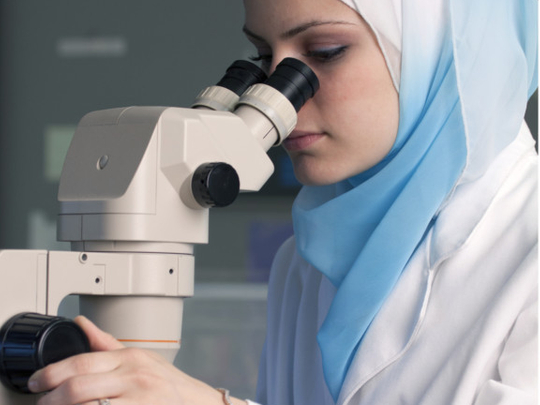
Earlier this month, results were released from the Programme for International Student Assessment (PISA) of Reading, Science, and Math. In this sixth iteration of the program, tests were administered to over half a million 15-year-old students from 72 participating states, altogether representing 29 million students.
From the Arab world, the following countries took part this time: Algeria, Jordan, Lebanon, Qatar, Tunisia, and the UAE. Students from all Arab states performed well below the international average in both Science and Math. Newcomer Algeria ranked just before last (the Dominican Republic). Tunisia and Lebanon were only 3 and 4 positions, respectively, above Algeria. The best of the group, by far, was the UAE, while still significantly below average. Qatar was the only one to show major improvements compared to the previous results of 2013 (tests conducted in 2012). At the top were the usual high achievers: Singapore, Estonia, Japan, Taiwan, and Finland.
What’s going on? Are we science educators in the Arab world failing in our mission to raise our students’ learning and skills to international levels? Are there mitigating factors that might explain the situation? And most importantly, can we point to changes that can be made in order to effect definite improvements?
To help education policymakers and educators steer their curricula and national programs toward the required improvements, this year’s PISA tests and surveys went further and collected data on a number of key factors: the roles of teachers and administrators (e.g. principals) in producing curricula and affecting students’ performance; the roles of the regional and national education authorities; the relative importance of having equipment to support science teaching compared to class sizes; the impact of students repeating grades (failing a whole year); etc. The PISA ‘Results in Focus’ document thus made some interesting, sometimes surprising recommendations.
The first important conclusion that PISA draws is the utmost importance of the duration (class time) and quality of science learning – more important than the equipment, staff numbers, or extra-curricular scientific activities; indeed, each additional hour spent in science class translated to 5 points in the PISA performance results. Secondly, it was stressed that improvements can only be made if both administrators and teachers on the one hand and students and their parents on the other are receptive and cooperative toward any important changes that are made to the curriculum or to the teaching methods. Thirdly, school and class sizes were found to have interesting impacts: students from larger schools were more likely to want to pursue science careers; small schools had better climate and discipline; and teachers in small class sizes were more likely to adapt their instruction to students’ needs, knowledge, and level of understanding. And perhaps most surprising of all: more time spent learning after school (e.g. doing homework) or receiving private tutoring led to worse performance in science! Moreover, science educators were more successful when they (with their school administrators) were given some latitude to modify and adapt their lessons.
The message is then clear: if we want students to do well in science, we need to put them in small classes and have teachers spend more time (quantitatively and qualitatively) with them and adapt their instruction to the students’ needs!
One finding was quite expected: the importance of having teachers explain scientific concepts, facts, theories, and most importantly the methodology behind them, i.e. how we come to know what we know, and to what extent we know that to be true. For this, experiments and hands-on activities are crucial, as is a continuous discussion of “why this is so”, i.e. the development of the critical thinking skills that form the basis of the scientific enterprise. As I often insist, teaching science without at least some essentials of the history and philosophy of science will not produce real (innovating) scientists. Indeed, one can only properly comprehend and digest scientific concepts and theories if one knows the history of those ideas and the methods that have led to their formulation.
Other lessons could be gleaned from what the high achievers do: Singapore is known to have reduced the amount of material covered in each subject and to have diversified the methods of teaching; Finland has famously dropped homework assignments to nearly nothing; the recent ‘Next Generation Science Standards’ in the USA stresses the importance of “the four C’s”: communication, collaboration, creativity, and critical thinking, where science becomes a collective effort, through class discussions, experiments done in groups, and creative work by teams.
There is no doubt that science education is absolutely crucial to any nation’s development in today’s world, which economies, human development, and standards of living are strongly tied to the state’s capacity to absorb modern knowledge, to innovate, and to make progress. The PISA ‘Results in Focus’ document puts it clearly: “At a time when science literacy is increasingly linked to economic growth and is necessary for finding solutions to complex social and environmental problems, all citizens, not just future scientists and engineers, need to be willing and able to confront science-related dilemmas.”
We in the Arab world need to pay close attention to the performance of our students in the international arenas, and more importantly to the factors that can help us make significant improvements, which we urgently need.
Nidhal Guessoum is a professor of physics and astronomy at the American University of Sharjah.










